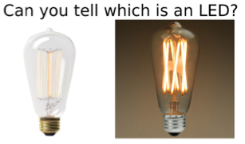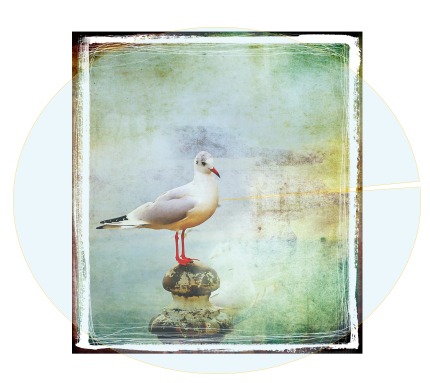- Beam
- CRI
- KELVINS
Beam Angle = Distribution of light:
Measured in Degrees
Click above to change the bulbs Beam Angle
Color Rendering (CRI) = Lighting effect on other colors:
Measured ranging 50 - 100


Click degrees to change"Color Temperature"
Color Temperature = Types of white light:
Measured in Kelvins

Click above to change the bulbs Color Temperature
L.E.D. (Light Emitting Diode)
Technical Information and Misconceptions
Nowadays, when a light bulb blows out in your home the once-simple task of just replacing a bulb no longer exists. Beginning January 2015 with inefficient incandescent (traditional light bulbs) being phased out for energy conservation purposes, people are challenged with confusing choices. Energy-efficient options like compact fluorescents, halogens (incandescent), and LEDs combined with color temperatures of 2700k - 5000k (warm/yellow to cool/white) and lumen equivalents (brightness) instead of just wattages make choosing a difficult task, even for those that attempt to research and learn about light bulb specifications. Instead of just one small light bulb section at the store, we now have an entire aisle from the floor to the ceiling with an overwhelming amount of light bulb options.

When LEDs first came out, they were not as reliable or as useful as those sold today. Now high quality LEDs are by far
the most safe, efficient, durable, and beautiful sources of light available on the market. Of course one may still find cheap low quality options sold on the Internet and in bargain shops that are giving the rest a bad rep. This article will help you better understand the capabilities of well made LEDs that are finally affordable and paying for themselves in energy savings within their warrantied life, as well as lasting10 years or more. A single LED Bulb or fixture can replace, replicate, or improve the Lumens (quantity of light), LUX (Intensity in a specific area), Beam Angle (light distribution) Color Rendition (lack of distortion of colors on an object), and Degrees Kelvin (Color Temperature / Appearance) of an Incandescent Halogen, High Pressure Sodium, and Metal Halide light bulb. An LED can be an alternative light source to a traditional bulb using 80% less energy, 95% less heat waste, and last an average of 9 years longer.
Common Misconceptions:
LEDs are not safe = False
LED’s are made from earth friendly componants as opposed to its commonly known competitor; fluorescents. L.E.D's can be safely disposed of in your everyday trash or recycled. Made from semiconductors such as gallium-based crystal, which is safe for humans and the environment. They also contain phosphorous, which is found in nature in several allotropic forms, and actually an essential element for the life of organisms. Most LEDs don’t even use glass, making them safer for children if ever dropped or accidentally bumped.
LEDs are made from hazardous materials including mercury = False
LEDs do not contain mercury or harmful gases. They can be used without harming humans, animals, and plants. They can also be disposed without any separation from your regular garbage.
LEDs are not as bright as other types of lighting = False
A small LED bulb can easily shine as bright as a 20 – 100 watt incandescent. In fact, a 180-Watt LED can be as bright as a 400 watt Metal Halide floodlight typically used for street lighting, parking lots, and warehouses.
LEDs are all white or blue and harsh on the eyes = False
The color emitted from LEDs can range from Red to Blue including Orange, Amber, Yellow, Green, and Turquoise with frosted lenses and designer diffusers that are just as soft and in some cases more easy the eyes that an incandescent.
LEDs will not work with my existing fixture = False
Today LEDs can be retrofitted for use with almost any fixture. E39 large or E26 screw-in bases like outdoor HID (High Intensity Discharge) or desk lamps and E12 smaller screw in bases for sconces. They come in MR16, GU10, and other pin-type bases. They even come in single-pin as well as duel-pin connectors and sizes to replace fluorescent tubes.
LEDs flicker and cause headaches = False
It is a common mistake to confuse swirly CFL (compact fluorescent) and fluorescent tube lighting with LED lighting. LEDs do not flicker at a rate causing headaches. LEDs actually reduce headaches compared to fluorescent lighting. Also magnetic fields are directly related to the amount of current running through a device; therefore considering the 80% wattage reduction in LED’s, magnetic fields are extremely reduced.







